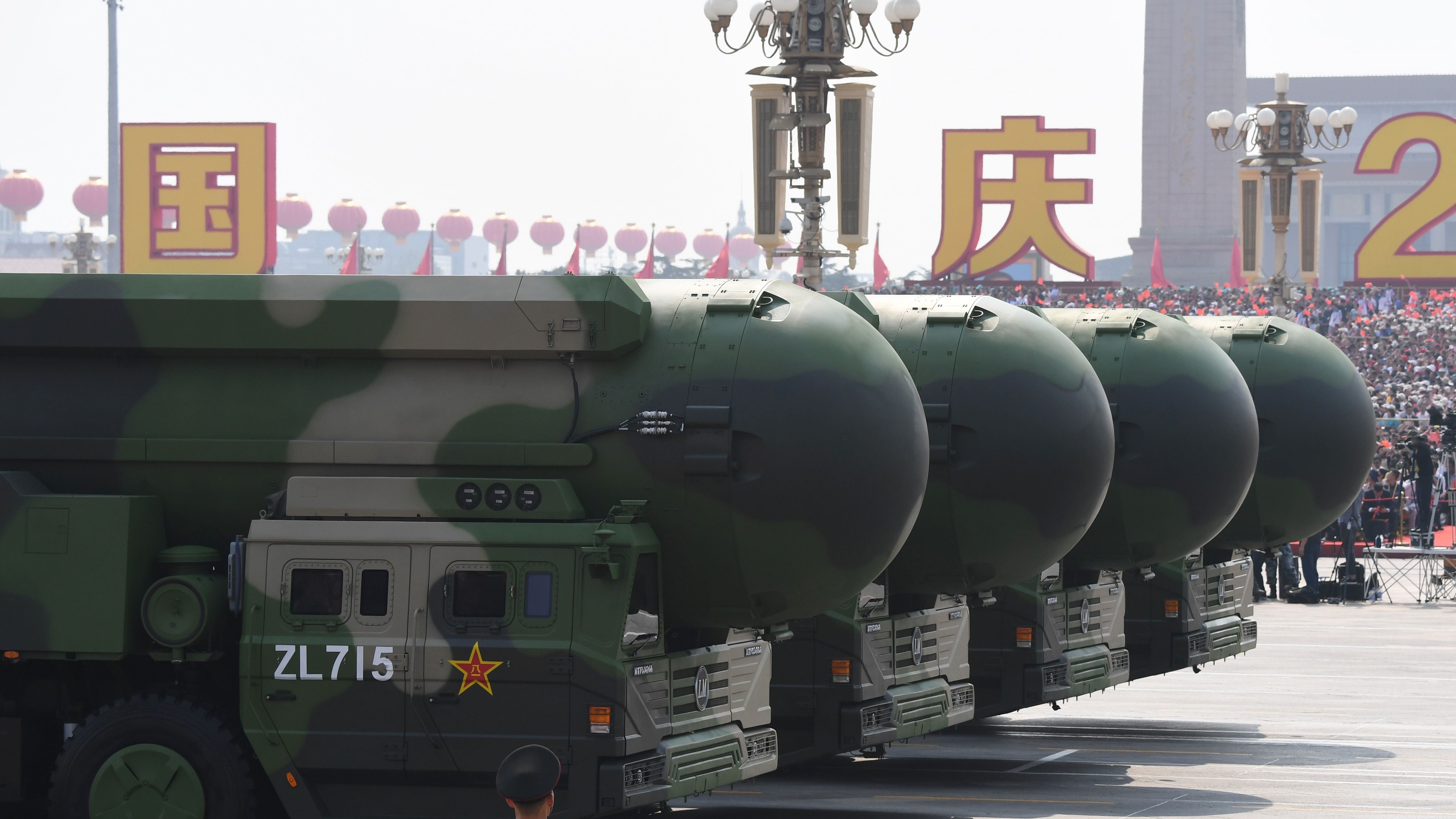There aren’t many bright spots in U.S.-Russia relations these days. But just as arms control negotiations had a stabilizing impact on the geopolitical rivalry between Washington and Moscow during the Cold War period, strategic stability talks today could help arrest the yearslong degradation in this critical, bilateral relationship.
Last month, U.S. and Russian national security officials met in Vienna for follow-up discussions on nuclear doctrine, transparency and verification. Moscow describes previous talks in July as “professional,” a word you don’t usually hear expressed by the Kremlin.
The dialogue comes at an especially tense time in the broader U.S.-Russia relationship, with the trust deficit the highest it has been since the early 1980s. Weeks ago, U.S. and Russian ground forces engaged in an altercation in northeast Syria. U.S. and Russian pilots continue to intercept one another from the Black Sea and Mediterranean to airspace off the Alaskan coast.
RELATED

Fortunately, there is still time for both nuclear superpowers to reintroduce some guardrails in their relationship. However, none of this is likely if the Trump administration continues to tie the extension of the New START accord to a more ambitious and unrealistic arms control agreement between Washington and Moscow. And it will be impossible if Washington insists on China’s participation.
With the Intermediate-Range Nuclear Forces Treaty dead and buried, and the Open Skies Treaty on life support (Washington signaled its intent to withdraw from Open Skies in May after months of internal debate), the New Strategic Arms Reduction Treaty is the only mechanism keeping the world’s two largest nuclear powers from expanding their arsenals. The Russians are on record supporting an extension of the agreement for an additional five years, and it is not hard to see why.
New START caps the number of U.S. and Russian deployed strategic nuclear warheads at 1,550, and limits the number of deployed nuclear-capable bombers and land-based and submarine-launched missiles to 700 apiece.
Just as important, the accord also provides the U.S. and Russia with significant access and information about one another’s strategic arsenals, a transparency that enhances each nation’s confidence about compliance.
With a COVID-19 pandemic affecting the lives of tens of millions of people worldwide and the global economy suffering its most serious shock in over a decade, the last thing the world needs is a new arms race between two powers that already possess over 90 percent of the global nuclear stockpile. This, however, is precisely what the result could be if the Trump administration continues to hold out and waste time.
There are two main problems with the administration’s current approach.
The first is practical: There is simply not enough time to negotiate a new strategic stability agreement — trilateral or otherwise — before New START expires in February 2021. To believe U.S. negotiators could entice a reluctant China to the table and negotiate the highly complicated military technicalities associated with nuclear transparency and verification as well as dispute resolution mechanisms in six months is to believe the impossible can happen. It took Washington and Moscow nearly three years and more than a few headaches before U.S. President Ronald Reagan and Soviet Premier Mikhail Gorbachev signed the IMF Treaty — an accord that consisted of only one class of missiles. The probability of negotiating a nuclear agreement that includes more weapons systems, more participants and more stringent verification protocols in less than one-fifth of the time is about as great as winning the Powerball jackpot.
The second is China. Over the past year, Chinese officials have been persistent in their opposition to a trilateral U.S.-Russia-China arms control accord and have described it as a transparent bid to kill New START. This is anything but a surprise; with a nuclear arsenal one-twentieth the size of Washington’s and one-twenty-second the size of Moscow’s, it makes absolutely no sense for Beijing to join such a negotiation. The nuclear disparity is too lopsided for China to even consider putting its own stockpile on the table.
The longer Washington persists with this delusional negotiating position, the more unnecessary risk it is choosing to accept.
There is no question China is a rising power, seeking to enlarge the quantity of its arsenal and modernize the quality of its nuclear deterrent. The U.S. Defense Department’s projection that Beijing will double its nuclear arsenal in the next decade could very well come to pass. It is also an indisputable fact that Russia is continuing to diversify its own nuclear capability and relying on its missile program to an even greater degree for external defense. All of these difficult issues will eventually need to be addressed in what will inevitably be long, arduous, extremely frustrating diplomacy.
The job, however, would be infinitely more complicated if Washington allowed the last remaining nuclear accord between the U.S. and Russia to wither on the vine.
A straightforward, unconditional extension of New START won’t please everyone — particularly those who hope to establish a new arms control system that accounts for the 21st century weapons platforms and technology. But it’s likely the best outcome the U.S. could expect in the short term.
Saving New START from expiring would add time to the clock, preserve a portion of an otherwise decaying strategic stability regime, and help Washington and Moscow put the brakes on a struggling bilateral relationship before it falls over the cliff.
Daniel R. DePetris is a fellow at Defense Priorities and a columnist for the Washington Examiner.








